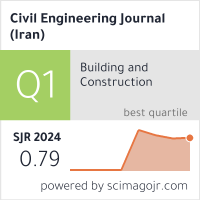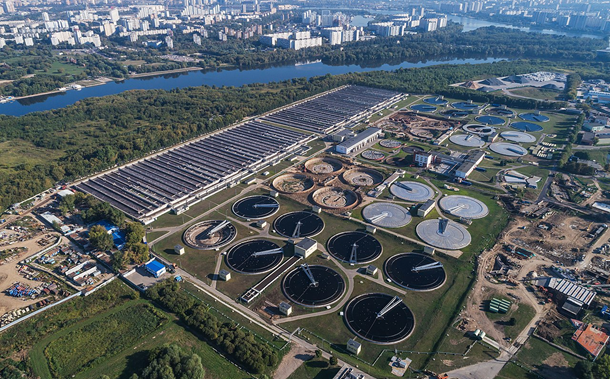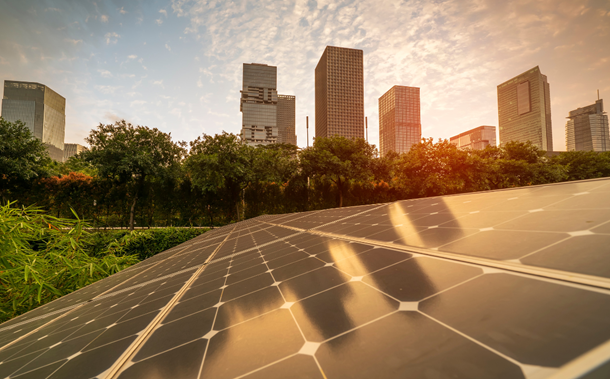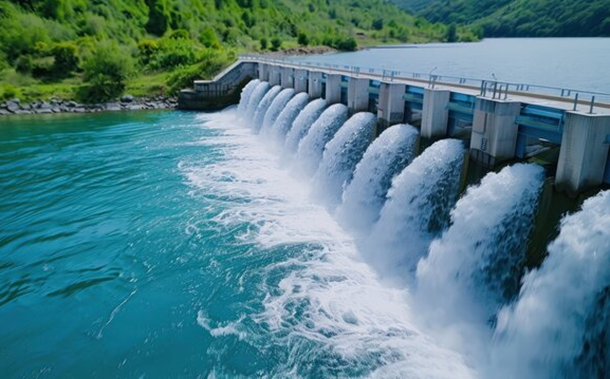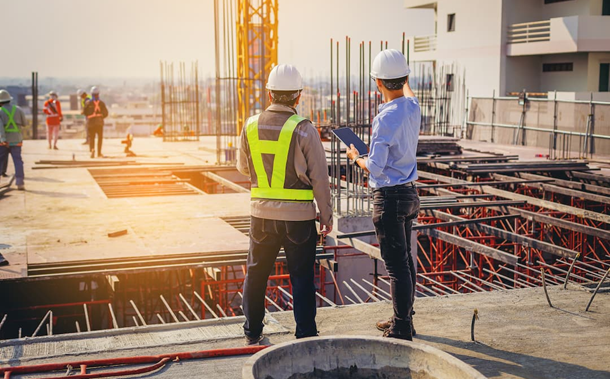Integrating Gradient Boosting and Parametric Architecture for Optimizing Energy Use Intensity in Net-Zero Energy Buildings
Downloads
Doi:10.28991/CEJ-2025-011-03-06
Full Text:PDF
Downloads
[2] Mehedhi, H., AMM, S. A., Mohammad Alamgir, H., & AMM, N. A. (2024). The prospects of zero energy building as an alternative to the conventional building system in Bangladesh (A review). Journal of Civil Engineering and Environmental Sciences, 10(2), 039–049. doi:10.17352/2455-488x.000082.
[3] Noh, Y., Jafarinejad, S., & Anand, P. (2024). A Review on Harnessing Renewable Energy Synergies for Achieving Urban Net-Zero Energy Buildings: Technologies, Performance Evaluation, Policies, Challenges, and Future Direction. Sustainability (Switzerland), 16(8). doi:10.3390/su16083444.
[4] Xiaoxiang, Q., Junjia, Y., Haron, N. A., Alias, A. H., Law, T. H., & Abu Bakar, N. (2024). Status, Challenges and Future Directions in the Evaluation of Net-Zero Energy Building Retrofits: A Bibliometrics-Based Systematic Review. Energies, 17(15), 3826. doi:10.3390/en17153826.
[5] Hongvityakorn, B., Jaruwasupant, N., Khongphinitbunjong, K., & Aggarangsi, P. (2024). Achieving Nearly Zero-Energy Buildings through Renewable Energy Production-Storage Optimization. Energies, 17(19), 4845. doi:10.3390/en17194845.
[6] Panchal, P., Mehta, V., Thakur, M., & Kumar, B. (2020). Pathway to Net-Zero Energy Buildings. Plant Archives, 20 Special (August), 156–159.
[7] Marszal, A. J., & Heiselberg, P. (2011). Life cycle cost analysis of a multi-storey residential Net Zero Energy Building in Denmark. Energy, 36(9), 5600–5609. doi:10.1016/j.energy.2011.07.010.
[8] Chen, S. Y. (2019). Use of green building information modeling in the assessment of net zero energy building design. Journal of Environmental Engineering and Landscape Management, 27(3), 174–186. doi:10.3846/jeelm.2019.10797.
[9] Becchio, C., Corgnati, S. P., Vio, M., Crespi, G., Prendin, L., Ranieri, M., & Vidotto, D. (2017). Toward NZEB by optimizing HVAC system configuration in different climates. Energy Procedia, 140, 115–126. doi:10.1016/j.egypro.2017.11.128.
[10] Latief, Y., Berawi, M. A., Koesalamwardi, A. B., Sagita, L., & Herzanita, A. (2019). Cost optimum design of a tropical near zero energy house (nZEH). International Journal of Technology, 10(2), 376–385. doi:10.14716/ijtech.v10i2.1781.
[11] Moreno, B., Del Ama Gonzalo, F., Ferrandiz, J. A., Lauret, B., & Hernandez, J. A. (2019). A building energy simulation methodology to validate energy balance and comfort in zero energy buildings. Journal of Energy Systems, 3(4), 168–182. doi:10.30521/jes.623285.
[12] Santos-Herrero, J. M., Lopez-Guede, J. M., & Flores-Abascal, I. (2021). Modeling, simulation and control tools for nZEB: A state-of-the-art review. Renewable and Sustainable Energy Reviews, 142. doi:10.1016/j.rser.2021.110851.
[13] Mahiwal, S. G., Bhoi, M. K., & Bhatt, N. (2021). Evaluation of energy use intensity (EUI) and energy cost of commercial building in India using BIM technology. Asian Journal of Civil Engineering, 22(5), 877–894. doi:10.1007/s42107-021-00352-5.
[14] Geng, Y., Lin, B., & Zhu, Y. (2020). Comparative study on indoor environmental quality of green office buildings with different levels of energy use intensity. Building and Environment, 168(August), 106482. doi:10.1016/j.buildenv.2019.106482.
[15] Samadi, M., & Fattahi, J. (2021). Energy use intensity disaggregation in institutional buildings – A data analytics approach. Energy and Buildings, 235. doi:10.1016/j.enbuild.2021.110730.
[16] Raimo Simson, Kirsten Engelund Thomsen, Kim Bjarne Wittchen, & Jarek Kurnitski. (2021). NZEB Requirements vs European Benchmarks in Residential Buildings. The REHVA European HVAC Journal, 58(2), 40–44.
[17] Garcia, J. F., & Kranzl, L. (2018). Ambition levels of nearly zero energy buildings (nZEB) definitions: An approach for cross-country comparison. Buildings, 8(10), 143. doi:10.3390/buildings8100143.
[18] Tabrizi, A. (2021). Sustainable Construction, LEED as a Green Rating System and the Importance of Moving to NZEB. E3S Web of Conferences, 241. doi:10.1051/e3sconf/202124102001.
[19] USGBC. (2025). LEED V4.1 Building Design and Construction. U.S. Green Building Council (USGBC), Washington, United States. Available online: https://build.usgbc.org/bd+c_guide (accessed on February 2025).
[20] Xia, B., Zuo, J., Skitmore, M., Pullen, S., & Chen, Q. (2013). Green Star Points Obtained by Australian Building Projects. Journal of Architectural Engineering, 19(4), 302–308. doi:10.1061/(asce)ae.1943-5568.0000121.
[21] DOEE. (2018). Green Building Report 2018. DC. Department of Energy & Environment (DOEE), Washington, United States. Available online: https://www.slideshare.net/slideshow/2018-green-building-report-finalpptx/254542535#27 (accessed on February 2025).
[22] Tracy, W. H., Joy, S., Flora, Y., & Audrey, W. (2020). Green Building Rating Systems: Energy Benchmarking Study. Environment Design Guide, Civic Exchange, Hong Kong.
[23] Grainger, C., & Rattenbury, J. (2021). Net Zero New Buildings Evidence and guidance to inform Planning Policy. South West Energy Hub, Bristol, United Kingdom.
[24] IBEC. (2014). Japan Sustainable Building Consortium, CASBEE for Buildings (New Construction) (1st Ed.). Volume 1, Institute for Building Environment and Energy Conservation (IBEC), Tokyo, Japan.
[25] Portalatin, M., Roskoski, M., & Shouse, T. (2015). Sustainability How-to Guide Series Green Building Rating Systems. Houston, United States. Available online: http://cdn.ifma.org/sfcdn/membership-documents/green-rating-systems-htg-final.pdf (accessed on February 2025).
[26] Wang, N., Fowler, K. M., & Sullivan, R. S. (2012). Green Building Certification System. PNNL-20966, US Department of Energy, Washington, United States.
[27] Robar, K. (2018). Comparative analysis study to compare LEED v4 and green globes in Newfoundland and Labrador. Morrison Hershfield Limited, Ottawa, Canada.
[28] Vierra, S. (2018). Green Building Standards and Certification Systems. Whole Building Design Guide (WBDG), National Institute for Building Sciences, Washington, United States. Available online: https://globalgbc.org/wp-content/uploads/2022/07/034_green-building-standards-and-certification-system.pdf (accessed on February 2025).
[29] Lee, J., & Shepley, M. (2019). The green standard for energy and environmental design (g-seed) for multi-family housing rating system in Korea: A review of evaluating practices and suggestions for improvement. Journal of Green Building, 14(2), 155–176. doi:10.3992/1943-4618.14.2.155.
[30] Kim, K. H., Chae, C. U., & Cho, D. (2022). Development of an assessment method for energy performance of residential buildings using G-SEED in South Korea. Journal of Asian Architecture and Building Engineering, 21(1), 133–144. doi:10.1080/13467581.2020.1838286.
[31] No, S., & Won, C. (2020). Comparative analysis of energy consumption between green building certified and non-certified buildings in Korea. Energies, 13(5), 1049. doi:10.3390/en13051049.
[32] Nahan, R. T. (2019). Architect's Guide to Building Performance: Integrating performance simulation in the design process. The American Institute of Architects, New York, United States.
[33] Suphavarophas, P., Wongmahasiri, R., Keonil, N., & Bunyarittikit, S. (2024). A Systematic Review of Applications of Generative Design Methods for Energy Efficiency in Buildings. Buildings, 14(5), 1311. doi:10.3390/buildings14051311.
[34] Stevanović, S., Dashti, H., MiloŠ¡ević, M., Al-Yakoob, S., & Stevanović, D. (2024). Comparison of ANN and XGBoost surrogate models trained on small numbers of building energy simulations. PloS One, 19(10), e0312573. doi:10.1371/journal.pone.0312573.
[35] Lu, Y., Wu, W., Geng, X., Liu, Y., Zheng, H., & Hou, M. (2022). Multi-Objective Optimization of Building Environmental Performance: An Integrated Parametric Design Method Based on Machine Learning Approaches. Energies, 15(19), 7031. doi:10.3390/en15197031.
[36] Labib, R. (2022). Integrating Machine Learning with Parametric Modeling Environments to Predict Building Daylighting Performance. IOP Conference Series: Earth and Environmental Science, 1085(1), 8DUMMY. doi:10.1088/1755-1315/1085/1/012006.
[37] Veiga, R. K., Veloso, A. C., Melo, A. P., & Lamberts, R. (2021). Application of machine learning to estimate building energy use intensities. Energy and Buildings, 249, 111219. doi:10.1016/j.enbuild.2021.111219.
[38] Seyedzadeh, S., Pour Rahimian, F., Rastogi, P., & Glesk, I. (2019). Tuning machine learning models for prediction of building energy loads. Sustainable Cities and Society, 47. doi:10.1016/j.scs.2019.101484.
[39] Amasyali, K., & El-Gohary, N. (2021). Machine learning for occupant-behavior-sensitive cooling energy consumption prediction in office buildings. Renewable and Sustainable Energy Reviews, 142. doi:10.1016/j.rser.2021.110714.
[40] Solmaz, A. S. (2020). Machine learning based optimization approach for building energy performance. 2020 Building Performance Analysis Conference and SimBuild, 29 September-1 October, Virtual Meeting.
[41] Guo, H., Duan, D., Yan, J., Ding, K., Xiang, F., & Peng, R. (2022). Machine Learning-Based Method for Detached Energy-Saving Residential Form Generation. Buildings, 12(10), 1504. doi:10.3390/buildings12101504.
[42] Barbaresi, A., Ceccarelli, M., Menichetti, G., Torreggiani, D., Tassinari, P., & Bovo, M. (2022). Application of Machine Learning Models for Fast and Accurate Predictions of Building Energy Need. Energies, 15(4), 1266. doi:10.3390/en15041266.
[43] Kumar, P., Kamalakshi, N., & Karthick, T. (2024). Towards Sustainable Architecture: Machine Learning for Predicting Energy Use in Buildings. Proceedings 3rd International Conference on Advances in Computing, Communication and Applied Informatics, ACCAI 2024, 10602461. doi:10.1109/ACCAI61061.2024.10602461.
[44] Ni, Z., Zhang, C., Karlsson, M., & Gong, S. (2023). Leveraging Deep Learning and Digital Twins to Improve Energy Performance of Buildings. 2023 IEEE 3rd International Conference on Industrial Electronics for Sustainable Energy Systems, IESES 2023, Shanghai, China. doi:10.1109/IESES53571.2023.10253721.
[45] Gan, H., & Gao, W. (2024). Ensemble machine learning for managing the required thermal energy from the architectural characteristics of residential buildings. International Journal of Low-Carbon Technologies, 19, 1222–1230. doi:10.1093/ijlct/ctae064.
[46] Abdelsattar, M., Ismeil, M. A., Azim Zayed, M. M. A., Abdelmoety, A., & Emad-Eldeen, A. (2024). Assessing Machine Learning Approaches for Photovoltaic Energy Prediction in Sustainable Energy Systems. IEEE Access, 12, 107599–107615. doi:10.1109/ACCESS.2024.3437191.
[47] Barbur, V. A., Montgomery, D. C., & Peck, E. A. (1994). Introduction to Linear Regression Analysis. The Statistician, 43(2), 339. doi:10.2307/2348362.
[48] Chen, T., & Guestrin, C. (2016). XGBoost. Proceedings of the 22nd ACM SIGKDD International Conference on Knowledge Discovery and Data Mining, 785–794. doi:10.1145/2939672.2939785.
[49] Breiman, L. (2001). Machine Learning, 45(1), 5–32. doi:10.1023/a:1010933404324.
[50] Friedman, J. H. (2001). Greedy function approximation: A gradient boosting machine. Annals of Statistics, 29(5), 1189–1232. doi:10.1214/aos/1013203451.
[51] Smola, A. J., & Schölkopf, B. (2004). A tutorial on support vector regression. Statistics and Computing, 14(3), 199–222. doi:10.1023/b:stco.0000035301.49549.8.
- Authors retain all copyrights. It is noticeable that authors will not be forced to sign any copyright transfer agreements.
- This work (including HTML and PDF Files) is licensed under a Creative Commons Attribution 4.0 International License.![]()




